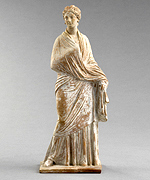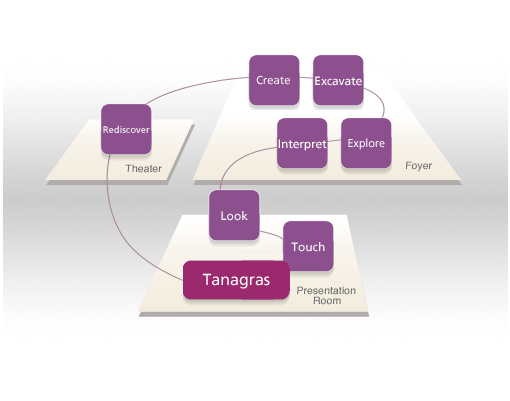|
|
 |




 |
The second presentation in the Museum Lab series explores the Tanagra figures of ancient Greece – centuries-old terracotta statuettes, mostly of women, from the cradle of Western art. The Paris World Fair of 1878 sparked a veritable craze for Tanagra figures throughout Europe. Originally named after the ancient city where they were first discovered, Tanagra figures became synonymous with elegance and femininity. Tanagra figures were a source of inspiration for many artists, including Rodin. Research and restoration work carried out for the Tanagra exhibition at the Louvre in 2003/2004 has brought important new scientific information to light, including significant archaeological evidence relating to their original uses.

 |
 |
 |
 |
 |
Titeux Dancer
c. 375-350 BC
H. 21 cm |
|
Woman with a Cloak
c. 330-200 BC
H. 25.3 cm |
|
Phainomeride figure
c. 150-100 BC
H. 42 cm |
 |
 |
| |

For the first time in Japan, visitors can discover three important, representative ancient Greek works in terracotta from the Louvre Museum.
Following the discovery of thousands of similar figurines in Tanagra in 1870, these statuettes – representing mostly female figures – sparked a veritable craze in late 19th-century Paris. The Museum Lab experimental space allows visitors to consult a range of multimedia resources. Experts from the Louvre accompany the visitor on an audio tour throughout the presentation, providing a richly informative commentary on the Tanagra figures, and the ancient Greek world.



Tanagra, Musée du Louvre, Paris © Photo DNP / René-Gabriel Ojéda |
|
|
 |